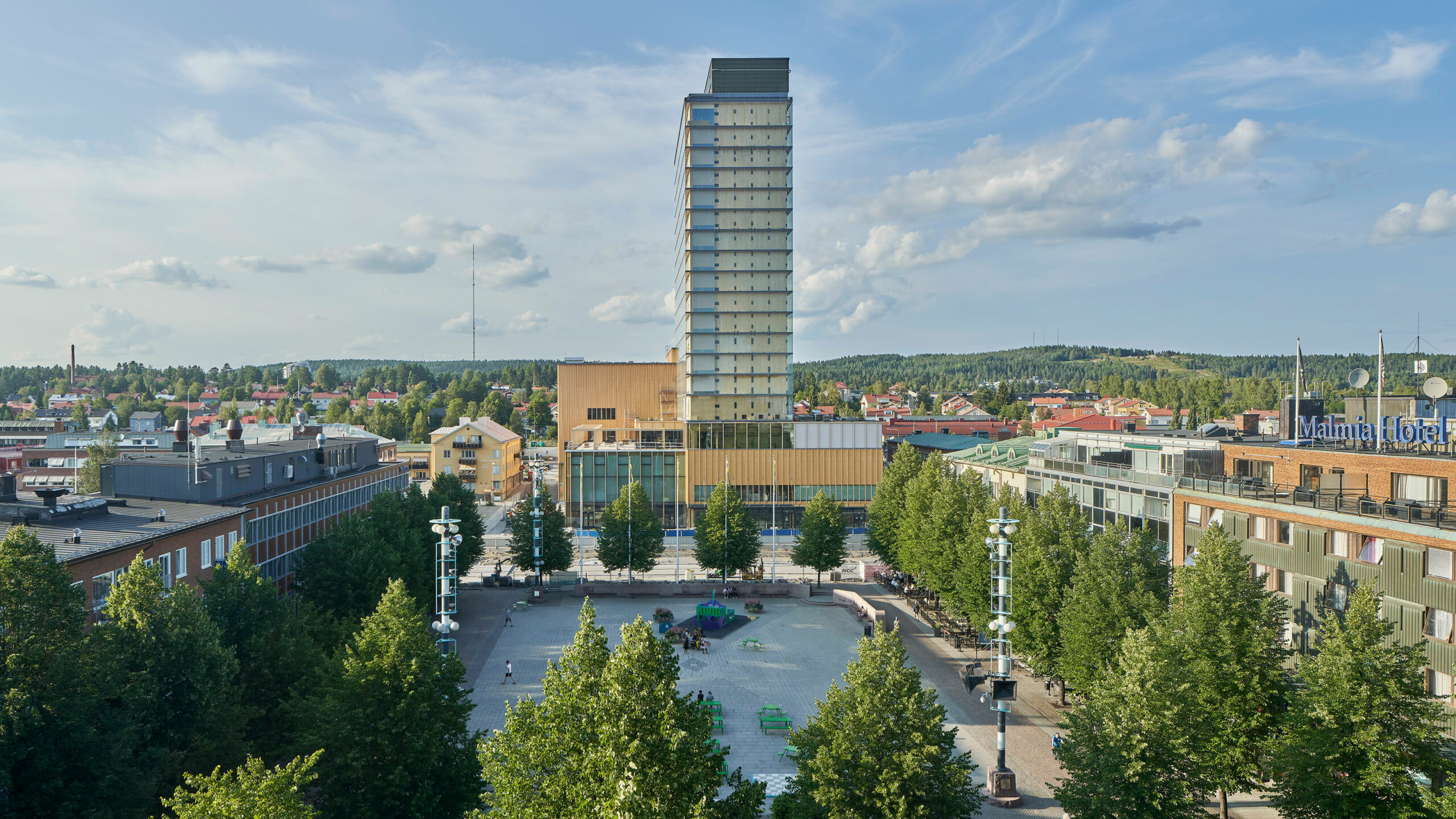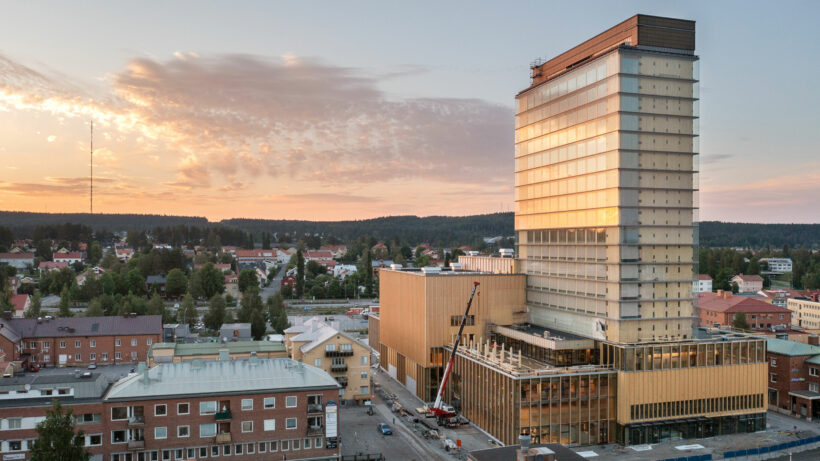The plot.
The fact that it was even available.
Just across the street from the city’s central square. “The square of opportunities.” A name that finally seems justified.
Skellefteå is a city in development. A population of 72,000 will become 100,000. In ten years. A growth figure not even Stockholm can match, and one mainly attributed to Northvolt, currently building Europe’s largest battery factory among the typically Swedish red wooden houses on the outskirts of Skellefteå. Number of employees: 3,000. But ten times that if you also count the families and the supplier companies. What will these highly educated high-tech engineers find to do in this northern Swedish mining town? Hang out at the local fast-food joint, Korv-Ivars?
This is where Sara comes in. The cultural centre named after Sara Lidman, one of 20th century Sweden’s most important authors and playwrights – she was from this region of Sweden (Västerbotten), wrote about poor farmers and workers, and had a punk hairstyle long before punk was even a thing. An apt reference, then, and not only because the cultural centre is home to a library and theatre (with six stages). At 75 metres, Sara (the house, not the writer) is one of the tallest wooden buildings in the world. A bold move in a relatively quiet city. Provocative, even. Just like Sara (the writer).
It’s a landmark, that goes without saying. Skellefteå is small-scale, and the 20-floor hotel skyscraper sticks up like a birthday candle. A candle attached to an expansive cake of four layers, taking up a whole expansive block. Without ever being perceived as dominating, split as it is into five different pieces, all of varying height and width. Your gaze takes parkour leaps from one volume to the next, right up to the restaurant at the top of the tower. An absolutely necessary institution if the city is to attract academically educated citizens.

